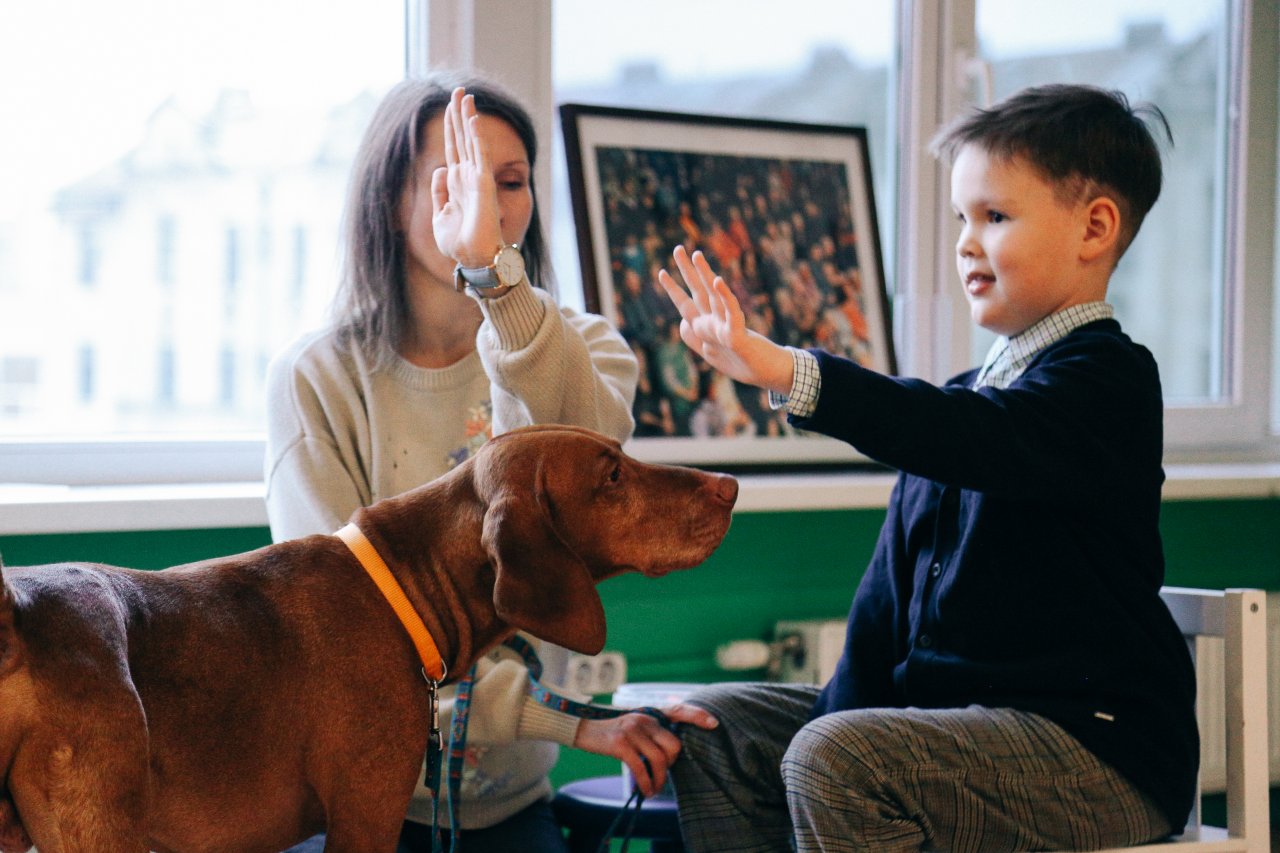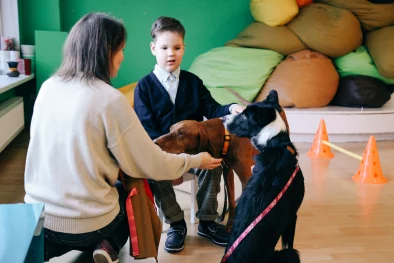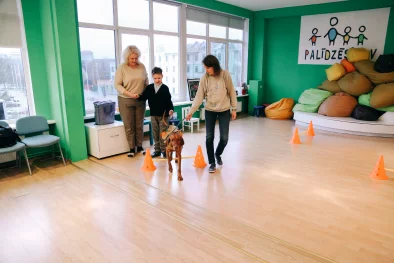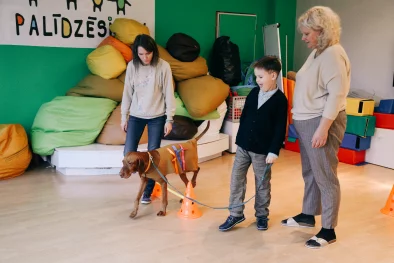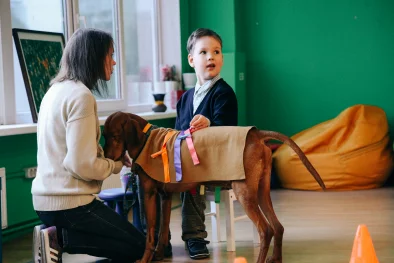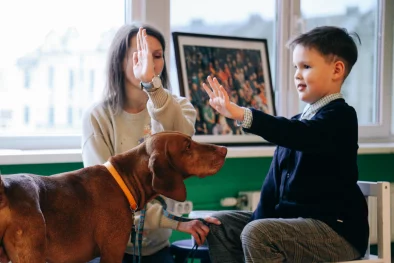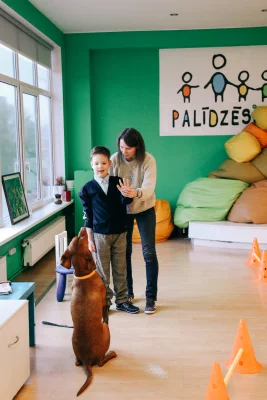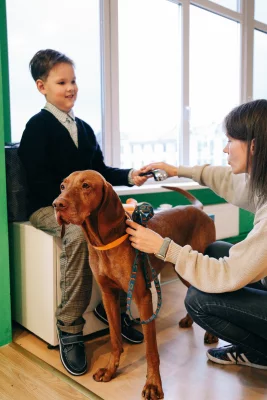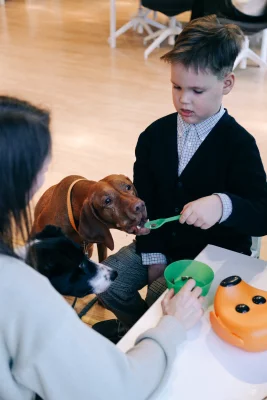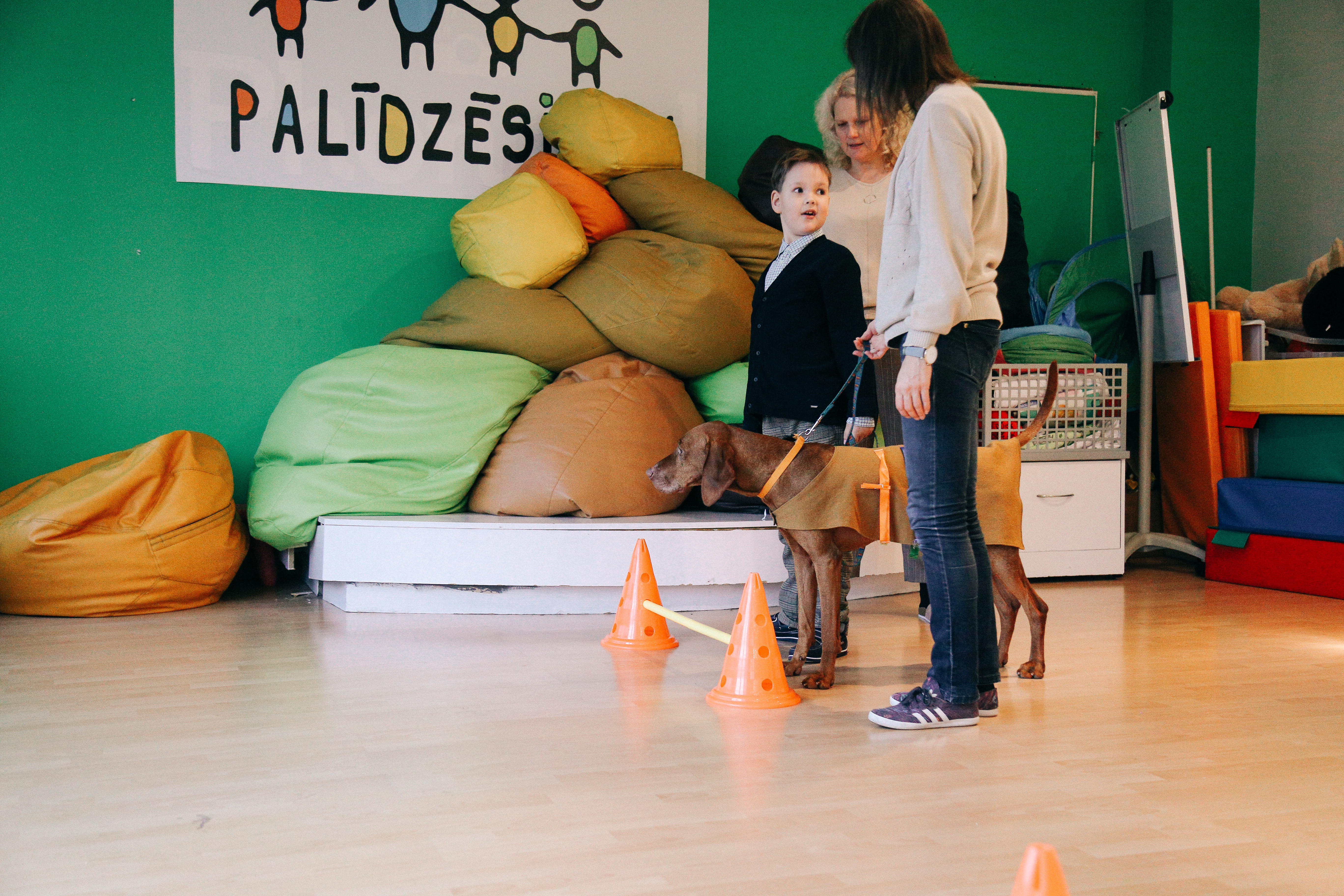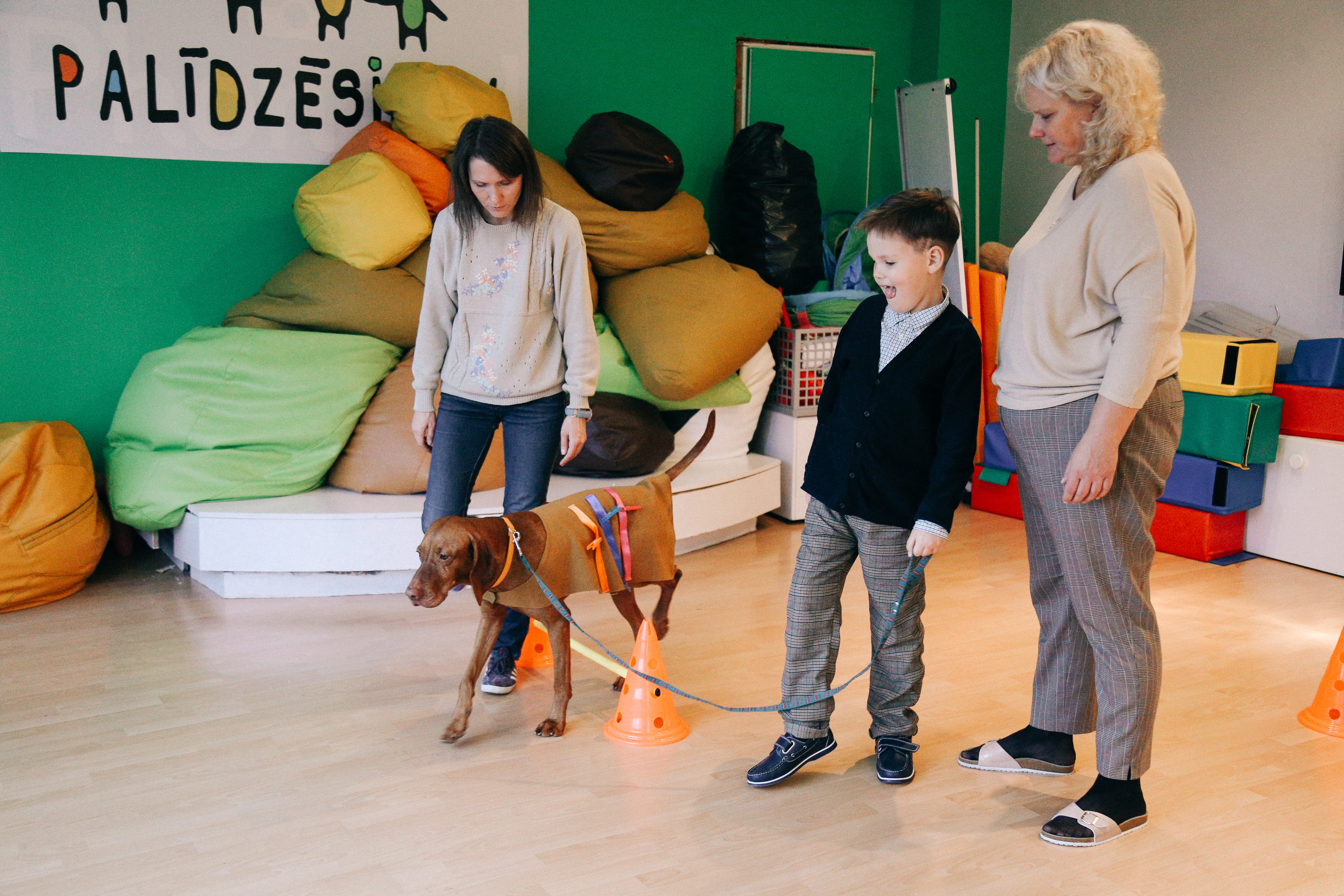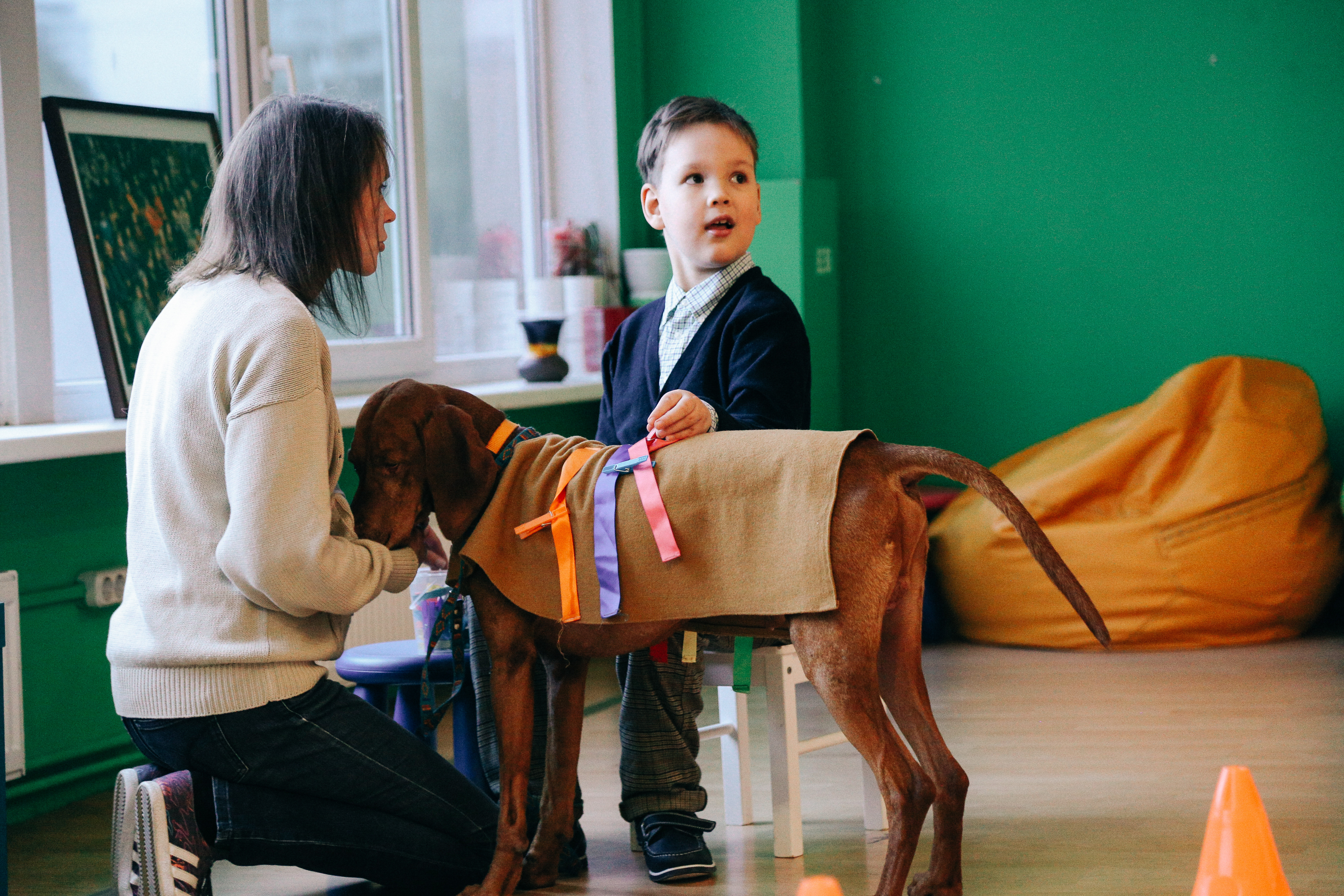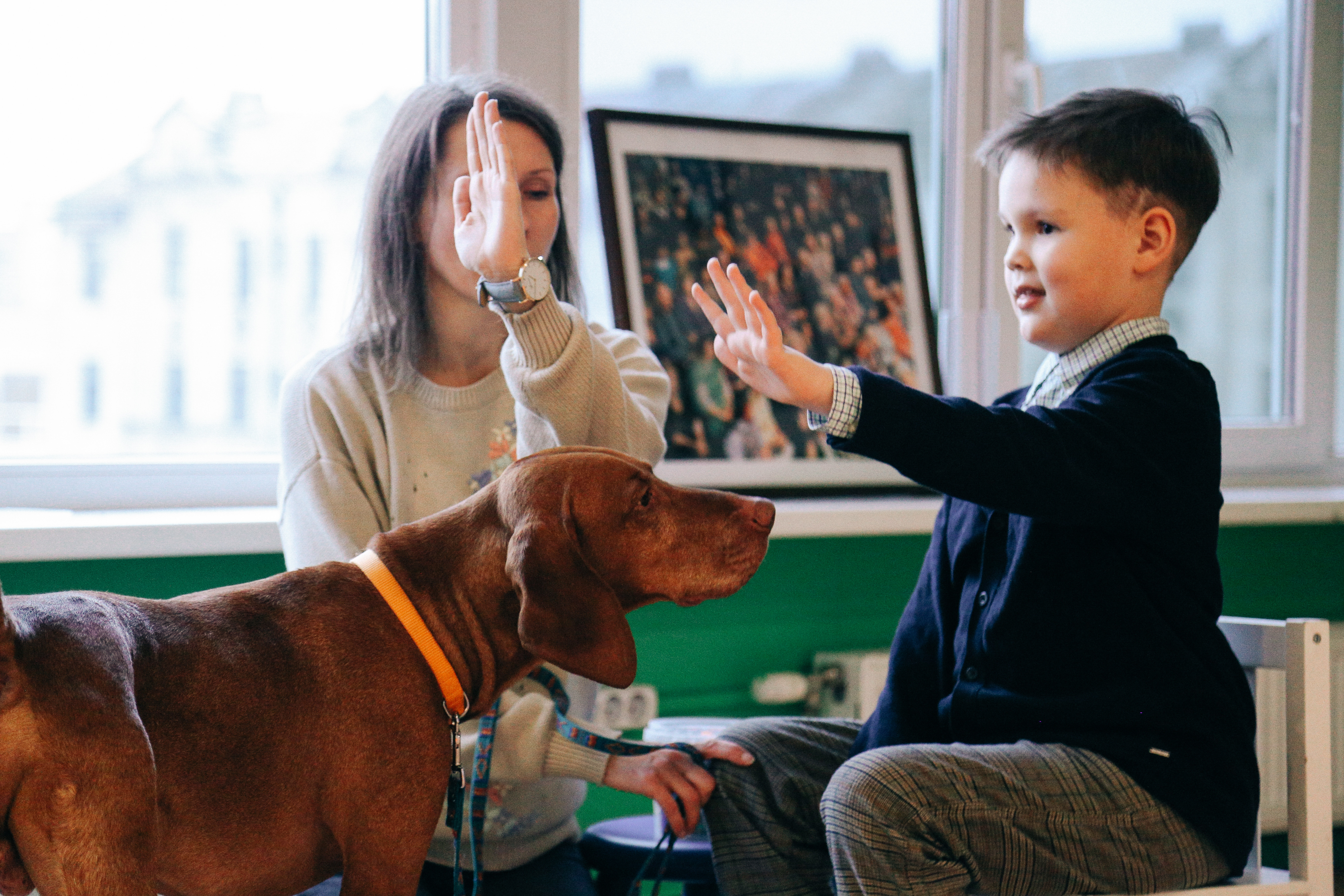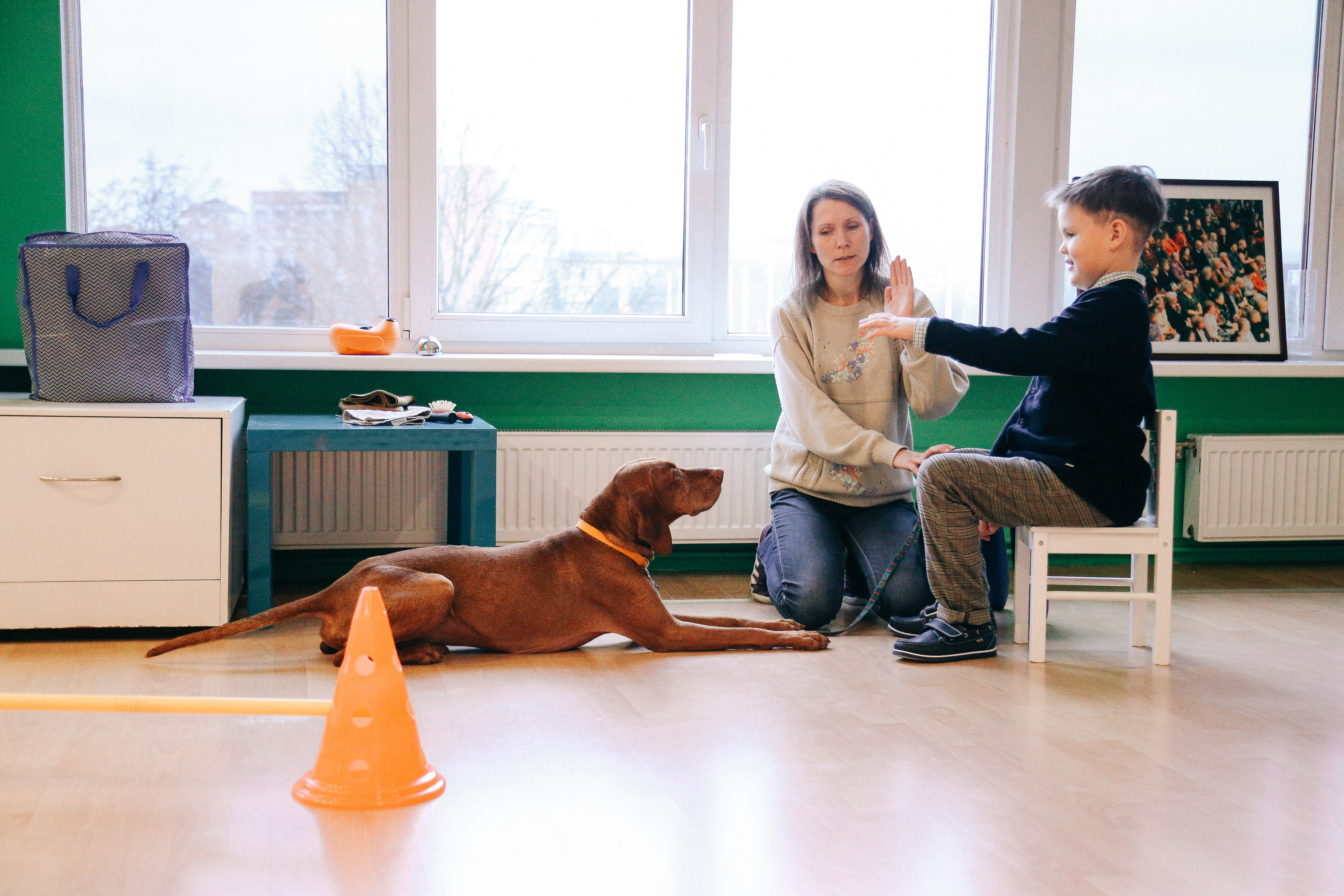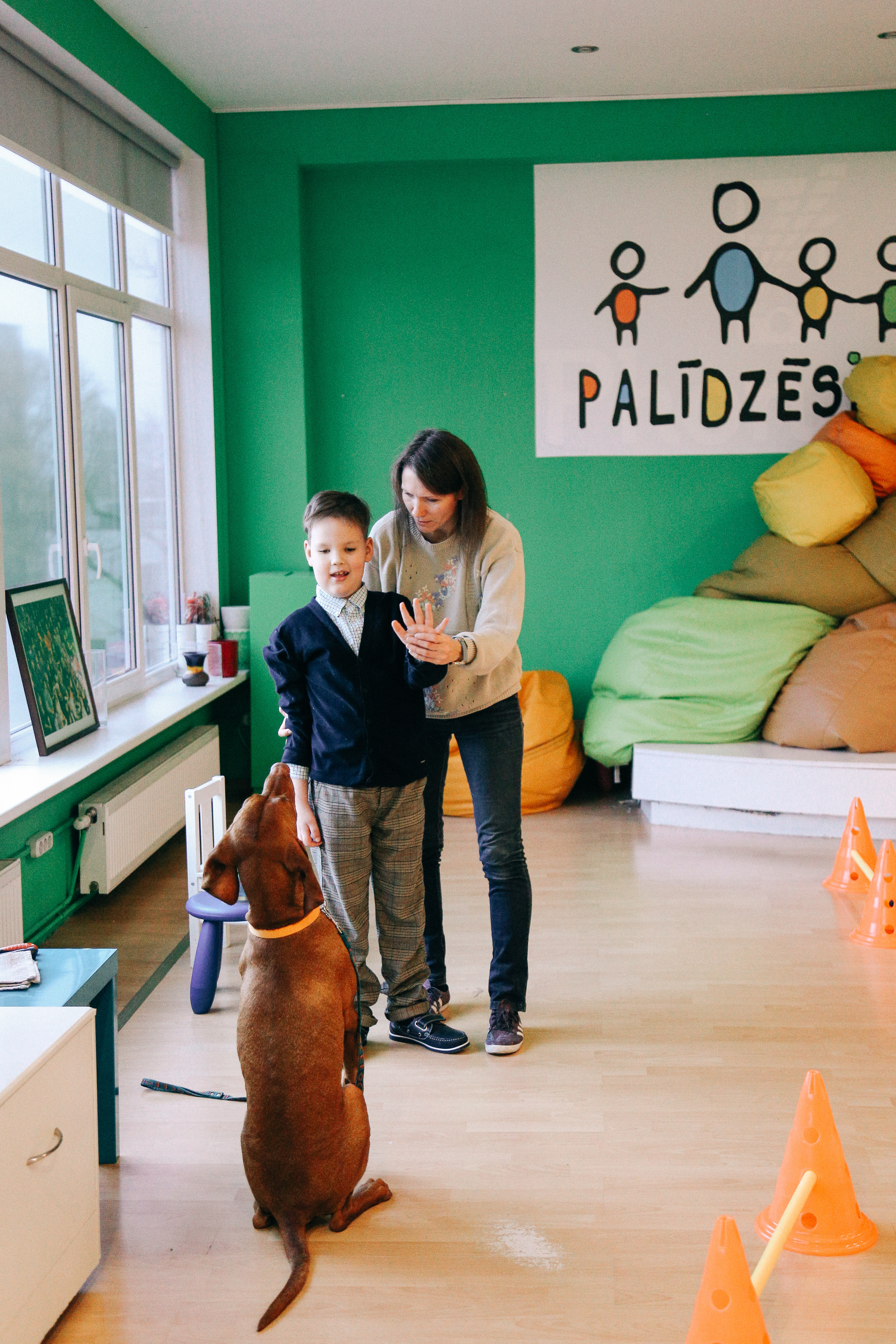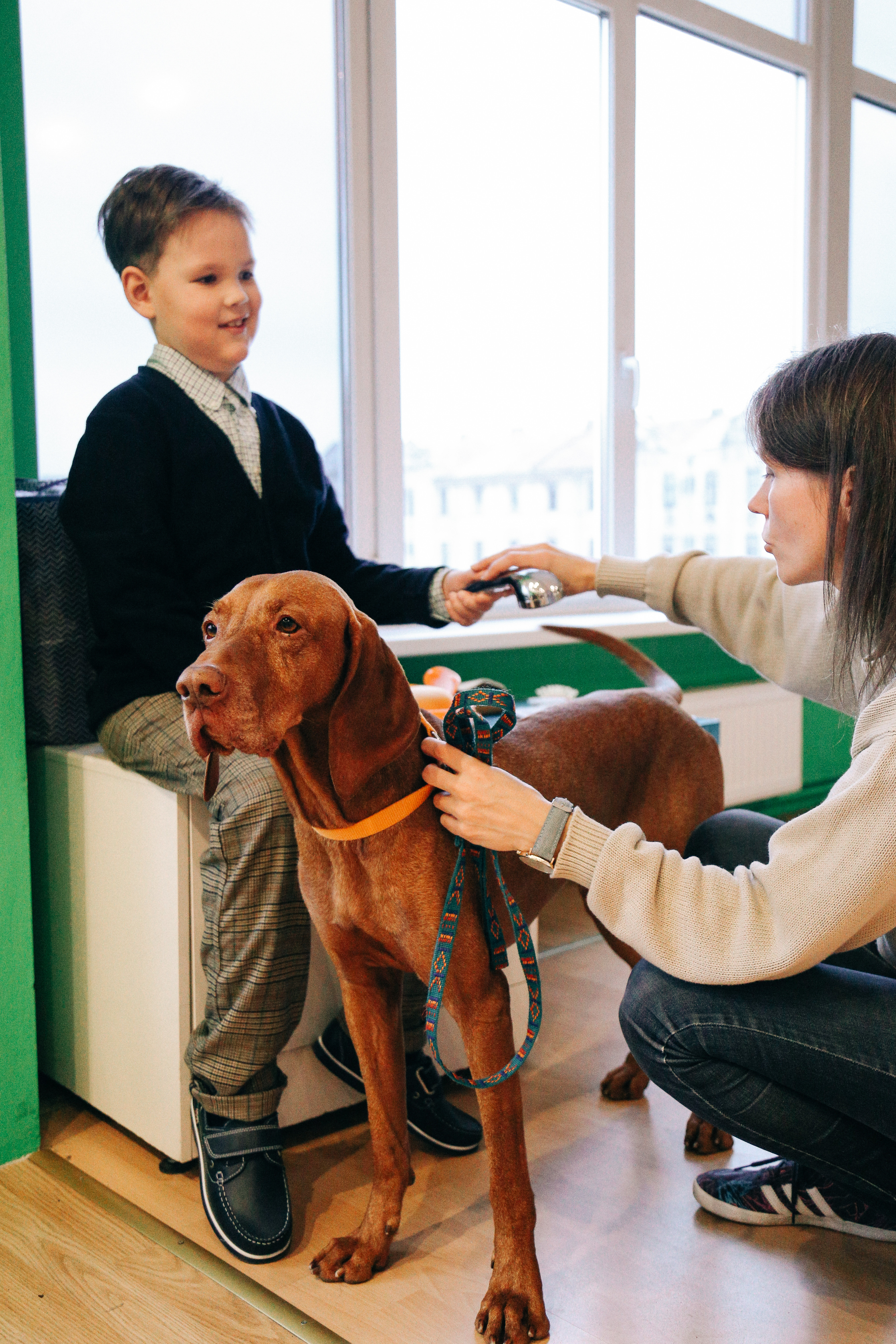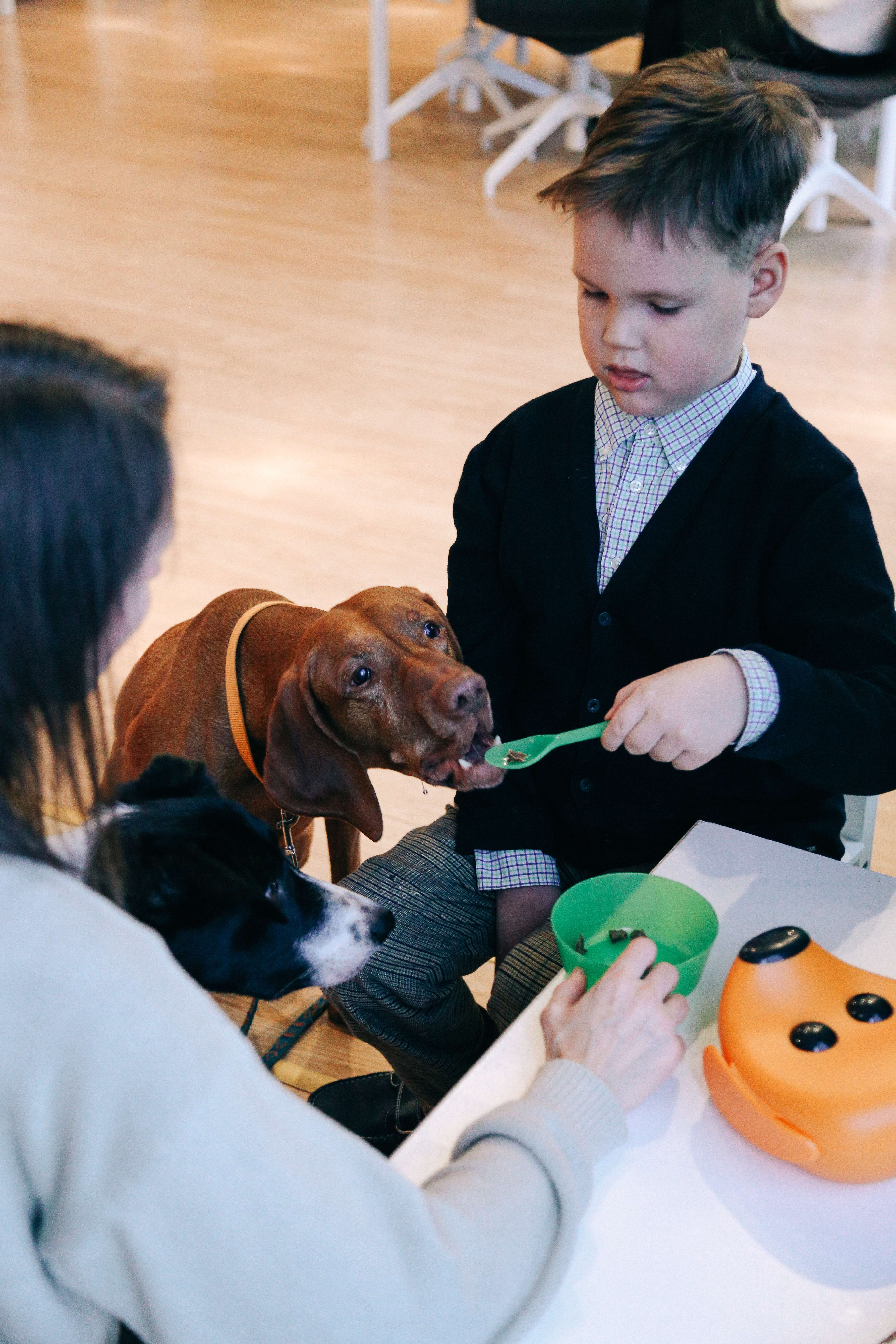Rikard visits a canisterapia course with his mother Baiba, where he learns to collaborate, listen and make contact. He is taking care of a dog - brushing, washing, feeding and walking with him, which is very important not only for psychoemotional purposes but also for restoring the physical capacity of the child.
“Three years ago, Rikard was ordinary child. And then one day he became special, very special - he became completely paralyzed. From then we started working - we attended different types of therapies. “We are very grateful for the possibility to attend canisterapia, because it teaches Rikard collaboration, how to make contact and he learns the skills of teaching a living being, and how it refers to him,” says Rikard's mother Baiba.
Rickard attends a canisterapia course to develope his social skills
Canisterapia is an interdisciplinary type of treatment associated with ergotherapy, physiotherapy and other therapies that can be used to improve social skills, physical condition and movement disorders. The dog acts as a motivator and a major communications object. The dog “talks” with all his body and “reads” the person from his movements, sighs and muscle tension or relaxation. The non-verbal children - just the same way so they get along much better with each other. Very often a child has no motivation to do something or it seems difficult and boring. On the other hand, if he needs to walk with a dog and overcome various obstacles, then the motivation is entirely different. The dog will not condemn, say nothing, not look at a person with pity or anything else. It is easier for children to unleash communication and do things, sometimes without even knowing it. In canisterapia, a child also has the opportunity to learn self-service skills, as well as collaborative skills, communication skills - what children lack when they live at home everyday and don't meet their peers. Child is taught to accept the dog as a partner, so the child also communicates with the person who owns the dog.
“The dog is the main motivator for the child to operate. The dog motivates you to do things that you might not like so much, or it's boring, like getting up from the chair, walking on balance, etc. If it is done with a dog or apparently for a dog, it has a different value, the child does it without even noticing that he was doing what was difficult and what he didn't like or don't want to do. As a result, the child is gradually developing his skills,” explains the therapist Līga.
